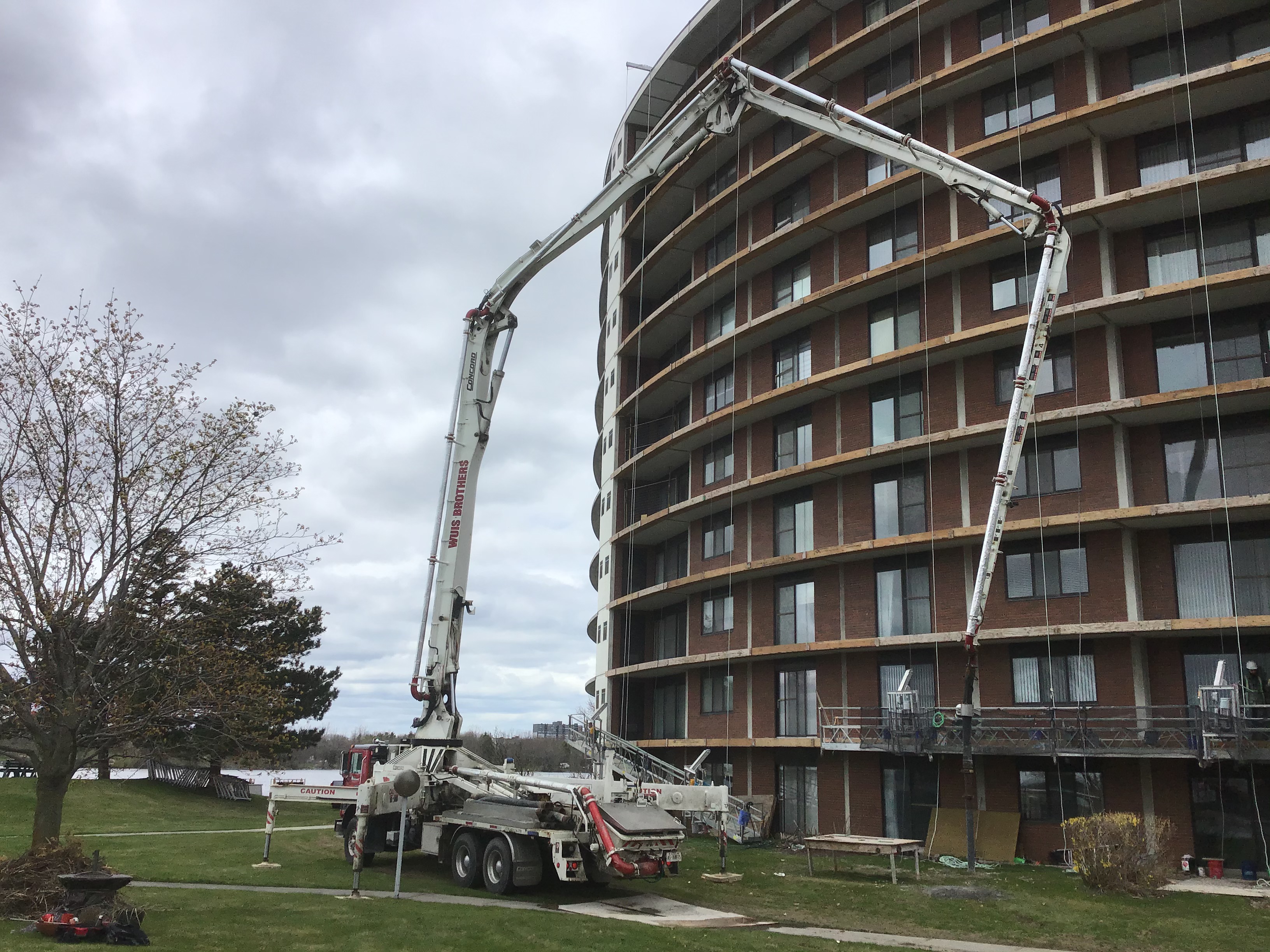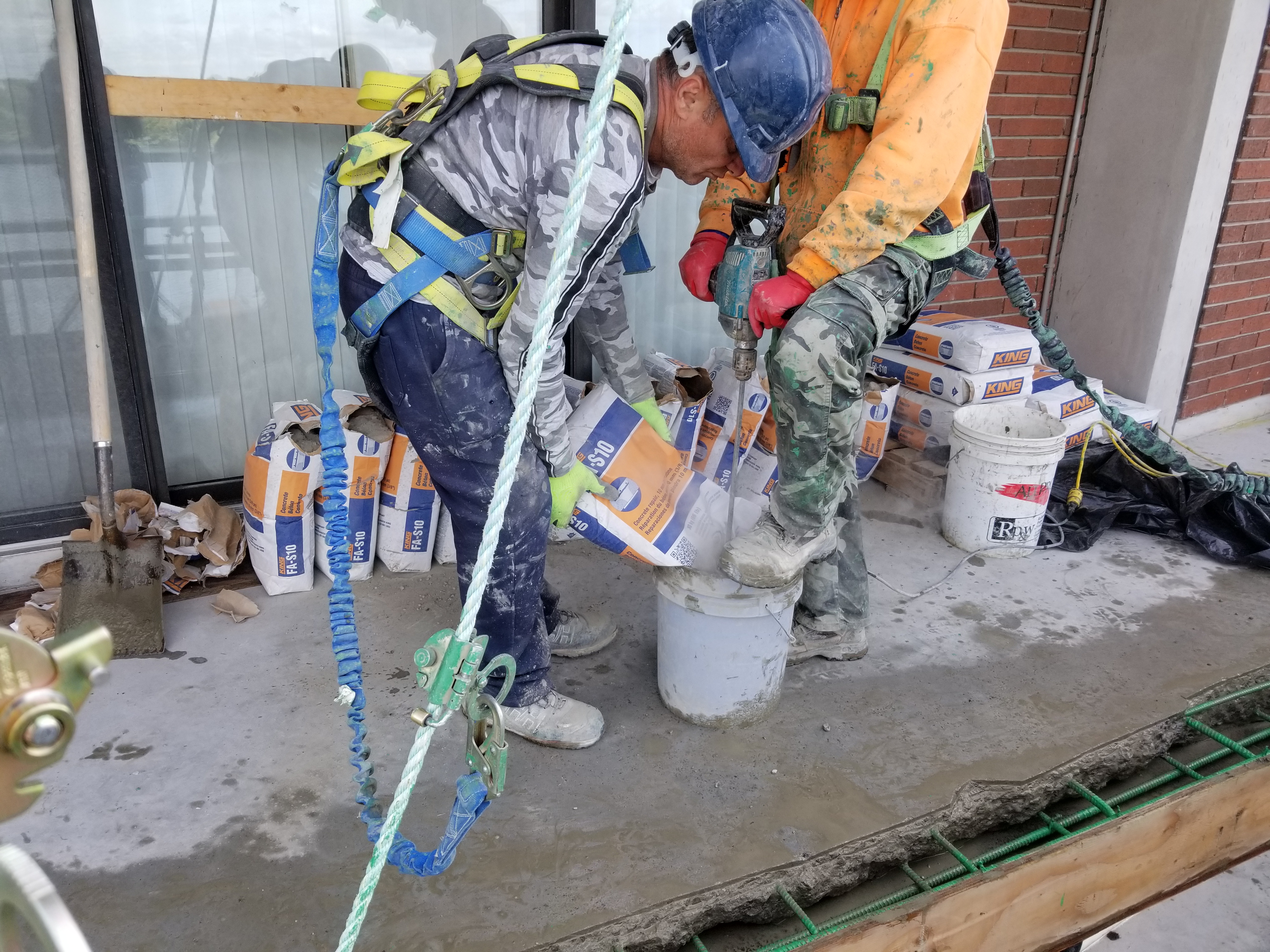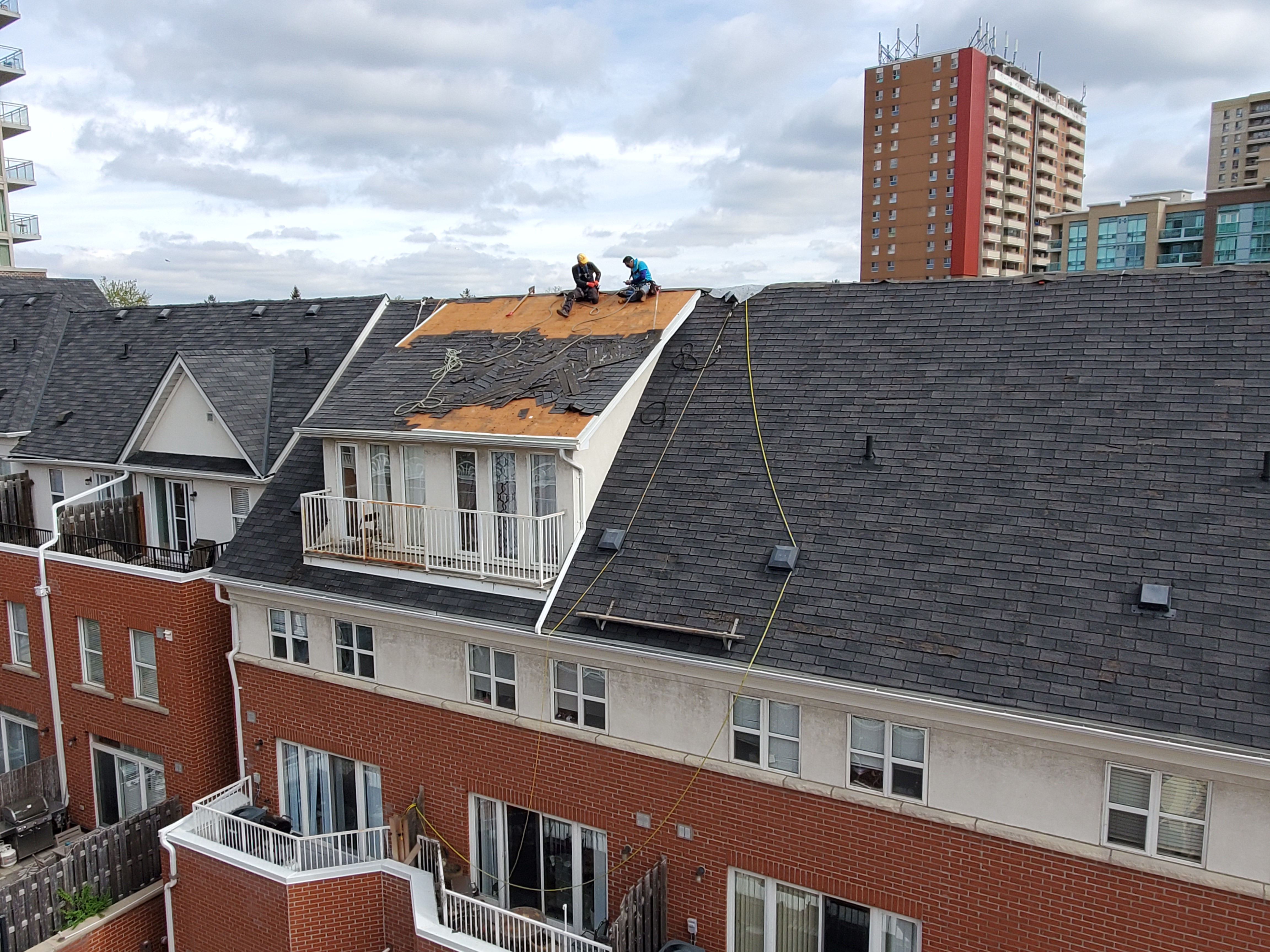We’re constantly reminded about ways a building restoration project can go off the rails: budget overruns, poorly defined scopes of work, lack of communication, and contractor deficiencies – just to name a few! These issues often create poor quality projects, and lead to stress, frustration, and extra work for Property Managers and Owners.
We have developed a process which drastically increases your chances of implementing a successful project. This four-step process is flexible, scalable, and always reliable. As restoration engineers and project managers, we have developed this turn-key process to maximize our client’s success and to help them achieve their objectives for their property.
The process consists of four steps: Condition Assessment, Bid Documents & Specifications, Tendering to Qualified Contractors, and Construction. For the process to be effective, we help guide you diligently through each step. This process if flexible and scalable. Let’s take a closer look.

Step 1: Condition Assessment
The purpose of this step is to provide the Owner with the information they need to make an educated decision about how to proceed. We start by asking questions to gain an understanding of the Owner’s objectives and financial constraints. What are they concerned about or trying to accomplish? What is their budget and timeframe?
We then carry out site visits to determine as built construction details, to assess the extent of the problem, and to carry out any testing or measurements required. Once all the data is collected, an analysis is completed to determine the root cause(s) of the issue and impact on the building. Repair options are then developed along with the pros and cons of each – this is a critical step, there is never just one option. An Owner needs options to make an educated decision. Finally, we will make recommendations based on their experience, taking into consideration the Owner’s objectives and financial constraints.
Once the Owner has been educated about the issue(s) and explored the available options they are ready to decide on a repair. The next steps involve preparing a design and contract document package then tendering the work to qualified contractors.

Step 2: Bid Documents & Specifications
This step is crucial and often overlooked for small projects – creating Bid Documents & Specifications that clearly define the owner’s expectations and scope of work. The documents we prepare include a clear, well defined Scope of Work, timelines, a Bid Form, and Contract Conditions. For larger projects, the Bid Documents and Specifications will include Drawings, Detailed Specifications, perhaps Optional Items, along with a more elaborate Bid Form and more extensive Contract Conditions.
Remember – this process is scalable and should be used for projects of all sizes! If your property is looking to perform low-risk work or smaller projects a brief scope of work, referred to as a Bid Request, can be used. A clear scope of work will provide contractor confidence in pricing which results in lower costs. This brings us to Step 3: Tendering to Qualified Contractors.

Step 3: Tendering to Qualified Contractors
Once the scope of work is prepared it’s time to get pricing from contractors. The first step in this process is to determine which contractors to invite. We have a comprehensive list of qualified contractors to recommend and welcome Owner contacts as well. We contact the contractors first to gauge their interest and availability to complete the work within your desired timeline. Only inviting contractors that are hungry for work and available to meet your timelines is a great way to get sharp pricing and give your project the best chance to be completed on time and on budget.
The tender process can be formal or informal depending on the size of job. A formal tender process includes a mandatory site meeting with all contractors to discuss the project, a period for questions and responses, and a firm closing date, time, and location for the sealed bids to be submitted. An informal process, best suited to smaller projects, would simply involve sending the scope of work package to the contractors and requesting pricing.
After the bids are received, we evaluate each bid based on price, schedule, and other factors, like contractor experience or familiarity with the property. For complex projects, we perform a sensitivity analysis on unit rate items to assess risk and help develop a sensible contingency allowance for the project. Once your project budgets are set and you have selected a bidder, we can begin Construction.

Step 4: Construction
The construction phase is a big one.
The first step is to award the project to a contractor. This is typically in the form of a letter or issuing a PO. For large projects, formal Contract and Permit packages are prepared. The permit application can add time to your project – if a building permit is required and you require a short schedule we can apply for the permit to expedite this process.
Before the contractor mobilizes, we will obtain insurance certificates and WSIB forms from the contractor along with other start up documents. We recently completed a project where a resident slipped on a ramp built by the contractor. The resident sued the Owner, and the Owner asked us if we had the insurance certificate. It was not only good enough that we had the certificate, but also that it named all parties as additionally insured.
Once you are ready to begin the work, we chair a project kick off or start-up meeting a few weeks before the project starts. This meeting forms a solid foundation for a successful project. The meeting agenda includes items such as schedule, quality control, budget, communication, where to park, where to place the disposal bins, etc.
During the work, we will complete periodic site visits to check compliance with the specifications and good building practice. To ensure quality we hold pre-start meetings with the contractor where we discuss the expectations for the project before any major phase of the project starts. Setting expectations helps avoid issues and conflicts. As work progresses, the contractor will submit progress draws (typically monthly) and the we will review them and produce a Certificate for Payment. Payment is only to be made to a contractor for completed work and work completed properly.
We hold bi-weekly progress meetings to keep everyone informed. If there are unforeseen circumstances that change the project schedule or budget you will be kept in the loop.
Finally, once the project is complete, we follow a close out process which includes issuing a certificate of substantial performance, which the contractor will publish. The date of publication will start the 45-day lien period, after which time, if there are no liens registered on the property, the hold back can be released. If the holdback is released early, the Owner could be liable to pay any unpaid subcontractors or suppliers up to 10% of the contract value. Typical warranties are 2 years for labour and materials and some material warranties extend 5 or 10 years. All the close out documents, warranties, product information (like paint colours), shop drawings should be collected and submitted prior to issuing final payment.
There you have it – The Restoration Process: 4 Steps To Successful Projects! We scale and follow this process for every project.






